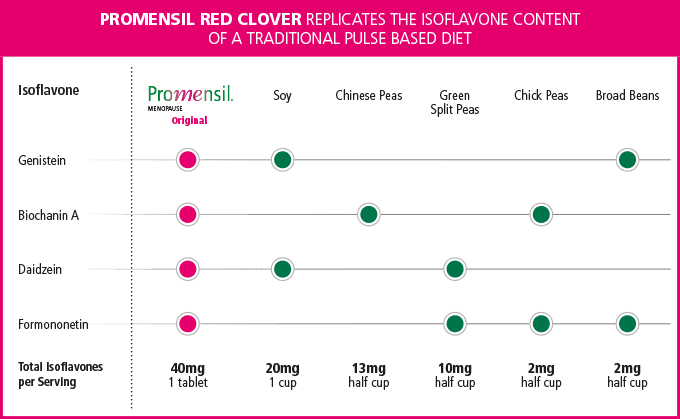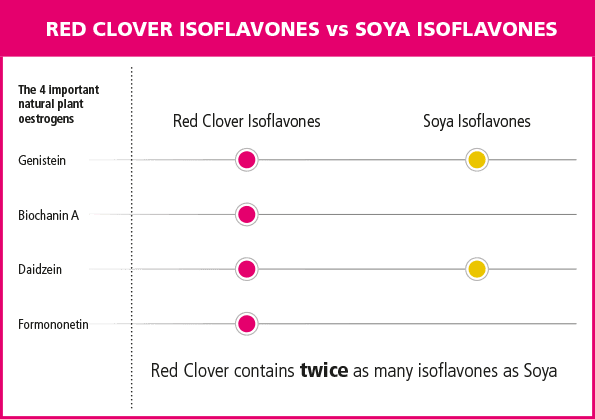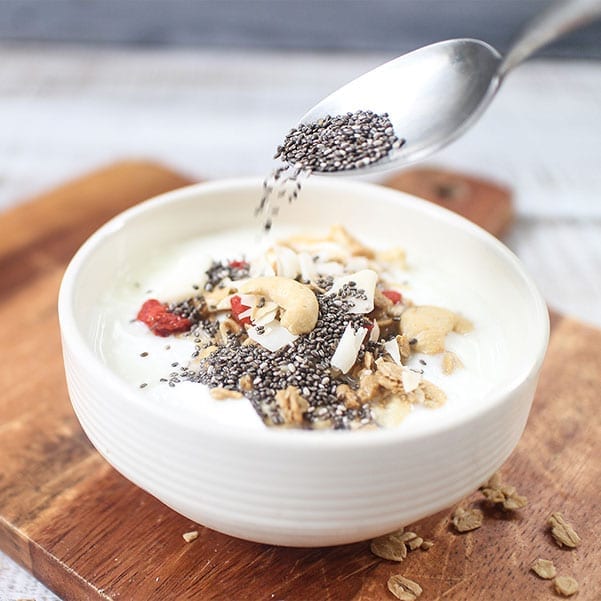Phytoestrogens Explained
Oestrogens play a vital role in maintaining a woman’s health and well-being over her lifetime. If oestrogens are so important to a woman’s health, why would nature purposely deprive the body of them?
Scientific research suggests that the answers may lie in our diet. Nature didn’t get it wrong. Many of us in the West changed our diet away from the type of diet our ancestors ate–the same type of diet typically still eaten in Asian, Central American, and Mediterranean countries. A key factor in traditional Eastern diets is that they contain greater quantities of legumes, which are rich in a group of phytoestrogens (plant oestrogens) called isoflavones.
What are Phytoestrogens?
Phytoestrogens are derived from naturally occurring compounds (such as isoflavones) that have oestrogenic activity. They have a similar chemical structure to oestrogen and bind to the oestrogen receptors, acting like hormone regulators. Dietary intake of isoflavones varies widely throughout the world, with the highest intakes among Asians. In Chinese and Japanese women, daily intakes of isoflavones range from 10–30 mg/d1.
Studies have confirmed that diets rich in Phytoestrogens can help women maintain their health, energy and vitality especially during the time of menopause. It’s been shown that natural isoflavones in some foods (namely pulses and legumes, such as soya, chickpeas and other beans) can be helpful in maintaining hormonal balance. However, research2 suggests the typical European diet contains almost no isoflavones and you would need to consume a significant amount to obtain the recommended daily intake of 40-80mg. This is where supplementation of Promensil Red Clover can help by contributing towards overall health and well-being during and after menopause.

Natural Dietary Approach
More than 1,000 isoflavones have been identified in plants. Of these, four specific isoflavones have been shown to possess significant individual and specific biological activity. These are: genistein, daidzein, formononetin and biochanin A.
What are the dietary sources of isoflavones?
Isoflavones are found mainly in legumes, such as red clover, lentils, split peas, chick peas, broad beans and soy. However, not all legumes contain all four important isoflavones. For example, red clover contains all four isoflavones whereas soy contains only the two isoflavones daidzein and genistein. The isoflavone content of food also varies, for example red clover also contains 10 to 20 times the quantity of isoflavones found in soy.
You can help boost levels of phytoestrogens through having a diet high in legumes rich in isoflavones such as lentils and soy.


One of the most simple of ways to get a Phytoestrogen rich foods into your diet is to start the day with a Menopause Medley Morning bowl.
Try this simple and delicious soaked muesli recipe and start your day right by avoiding the sugary cereal you can find in the shops.
- Add 1 tbsp each of chia seeds, flax seeds and oats into a bowl and soak overnight in one cup of soya milk.
- In the morning, sprinkle pumpkin seeds, sunflower seeds, sesame seeds and linseeds.
- Top with nuts and fruits such as flaked almonds, whole almonds, hazelnuts and berries.
- If you are missing that sweet treat, a grated apple or manuka honey is a nice addition which will also help to boost anti-oxidants while avoiding processed sugar.
1Source: Chen et al., 1999; Frankenfeld et al., 2004; Kurahashi et al., 2009
2Source: Van Erp-Baart et al., 2003
